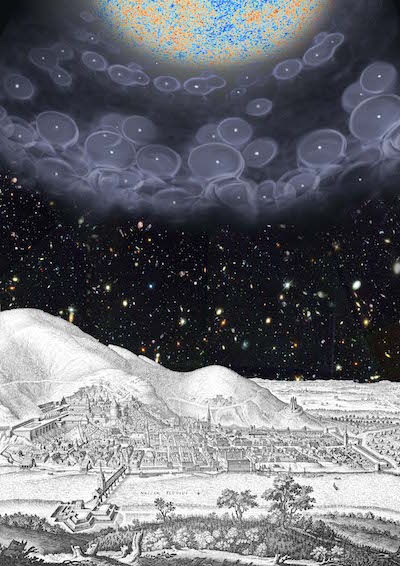Rationale
The earliest observable structure in the universe dates back to the epoch of recombination at z ~ 1100. After this cosmic event, the universe remained neutral until the first generation of UV luminous sources such as massive stars, galaxies and accreting black holes formed. These first sources signalled the end of the "dark ages" and the universe entered the reionization epoch when the UV radiation of the first sources caused Hydrogen to reionize.
Over the last decade, much observational effort has been devoted to projects aiming to find the objects responsible for reionisation and to pin down the time scale of reionisation. Detailed analysis of the absorption of neutral Hydrogen in the spectra of quasars up to z=7 revealed that reionization ended around z=6. Observations of the Cosmic Microwave Background with the WMAP and Planck satellites imply reionization started at z ~ 10. Furthermore, experiments to directly detect the progress of reionisation via the HI 21 cm observations are currently underway and could provide valuable information regarding the evolution of the neutral Hydrogen density with time. These observational efforts are being matched by increasingly detailed simulations of the evolution of the intergalactic medium in the early universe.
The sources responsible for reionization are being found in deep observations with the Hubble Space Telescope and the largest optical-infrared telescopes and have been confirmed up to redshifts of z~10. Wide field surveys have enabled the discovery of numerous luminous quasars up to redshifts of z~7. These are being used to study early massive galaxy formation, the growth of the first black holes and to constrain the state and metal content of the intergalactic medium.
We expect much progress in the coming years, as many new facilities are coming online or are being build. With the launch of JWST the ability to study the first galaxies will improve significantly, while 30-40m class telescopes are being constructed on the ground. ALMA is already providing the first glimps of the characteristics of the earliest galaxies and black holes that are known today. The next generation of wide field survey facilities, including Subaru/HyperSuprimeCam, LSST and Euclid, will provide samples of quasars well beyond z=7.
Topic discussed during the conference:
- Quasars and galaxies in the early universe
- UV to mm properties of the most distant galaxies and quasars
- Constraints on reionization from IGM absorption toward high-z quasars
- Constraints on reionization from Lyman-alpha emitters
- Metal enrichment of the IGM
- Theory and simulations of the Epoch of Reionization
- The first black holes and early black hole-galaxy coevolution
- Future surveys for the sources that reionized the universe (Euclid, JWST, LSST)

